Mazda CX-30 vs Subaru Forester – Which model is better for everyday use?
Compare performance, boot capacity, efficiency and price at a glance.
Find out which car is the better choice for you – Mazda CX-30 or Subaru Forester?
Costs and Efficiency:
Looking at overall running costs, both models reveal some interesting differences in everyday economy.
Mazda CX-30 has a clearly perceptible advantage in terms of price – it starts at 25200 £, while the Subaru Forester costs 34700 £. That’s a price difference of around 9471 £.
Fuel consumption also shows a difference: Mazda CX-30 manages with 5.70 L and is therefore clearly more efficient than the Subaru Forester with 8.10 L. The difference is about 2.40 L per 100 km.
Engine and Performance:
Power, torque and acceleration say a lot about how a car feels on the road. This is where you see which model delivers more driving dynamics.
When it comes to engine power, the Mazda CX-30 has a clearly perceptible edge – offering 186 HP compared to 136 HP. That’s roughly 50 HP more horsepower.
In acceleration from 0 to 100 km/h, the Mazda CX-30 is convincingly quicker – completing the sprint in 8.30 s, while the Subaru Forester takes 12.20 s. That’s about 3.90 s faster.
In terms of top speed, the Mazda CX-30 performs slight better – reaching 204 km/h, while the Subaru Forester tops out at 188 km/h. The difference is around 16 km/h.
There’s also a difference in torque: Mazda CX-30 pulls evident stronger with 240 Nm compared to 182 Nm. That’s about 58 Nm difference.
Space and Everyday Use:
Cabin size, boot volume and payload all play a role in everyday practicality. Here, comfort and flexibility make the difference.
Both vehicles offer seating for 5 people.
In curb weight, Mazda CX-30 is slightly lighter – 1455 kg compared to 1693 kg. The difference is around 238 kg.
In terms of boot space, the Subaru Forester offers slightly more room – 508 L compared to 430 L. That’s a difference of about 78 L.
In maximum load capacity, the Subaru Forester performs slightly better – up to 1731 L, which is about 325 L more than the Mazda CX-30.
When it comes to payload, Mazda CX-30 hardly perceptible takes the win – 496 kg compared to 492 kg. That’s a difference of about 4 kg.
Who wins the race?
The Mazda CX-30 proves to be wins the duel decisively and therefore becomes our DriveDuel Champion!
Mazda CX-30 is the better all-rounder in this comparison.
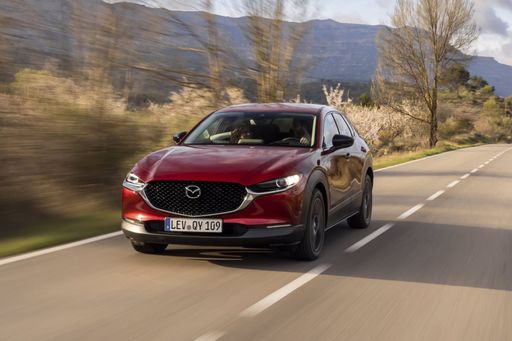
Mazda CX-30
Mazda CX-30
The Mazda CX-30 effortlessly combines sleek design with a sense of adventure, making it an appealing choice for urban explorers and countryside enthusiasts alike. Inside, the cabin is thoughtfully designed, offering both comfort and cutting-edge technology to enhance the driving experience. Its performance on the road is agile, providing a smooth and engaging journey for drivers and passengers.
details @ de.mazda-press.com
@ de.mazda-press.com
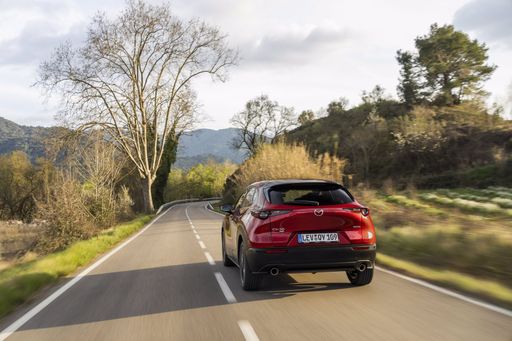 @ de.mazda-press.com
@ de.mazda-press.com
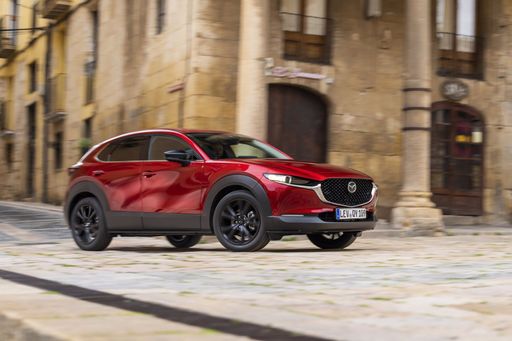 @ de.mazda-press.com
@ de.mazda-press.com
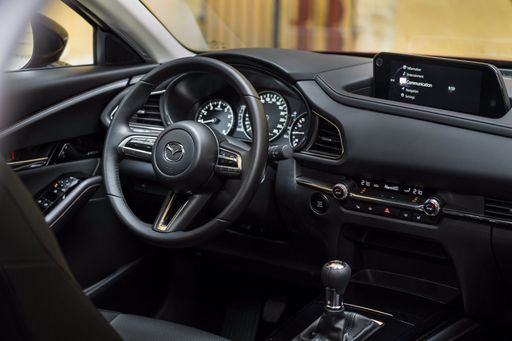 @ de.mazda-press.com
@ de.mazda-press.com
Subaru Forester
The Subaru Forester is a versatile SUV known for its impressive off-road capabilities and practical design. With a spacious interior and advanced safety features, it offers comfort and security for both city driving and outdoor adventures. Its reliable performance and all-wheel-drive system make it a popular choice among those who appreciate a combination of functionality and rugged charm.
details @ Subaru
@ Subaru
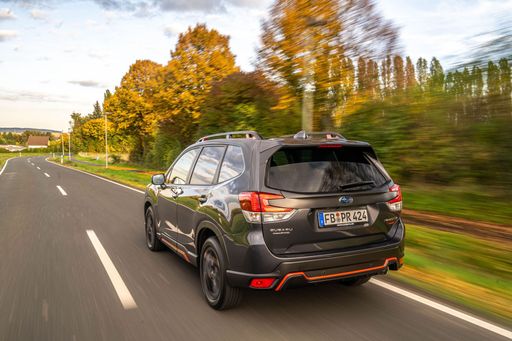 @ Subaru
@ Subaru
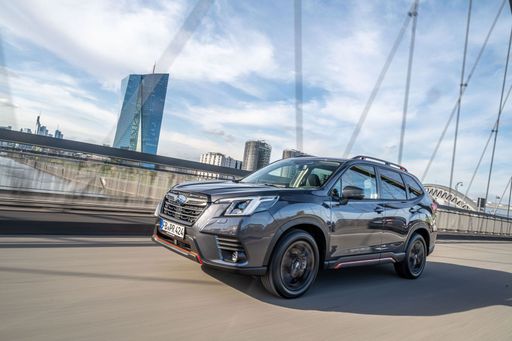 @ Subaru
@ Subaru
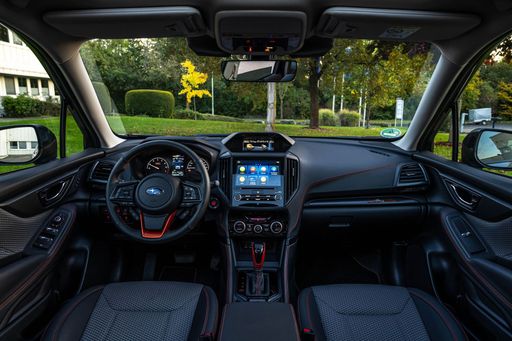 @ Subaru
@ Subaru
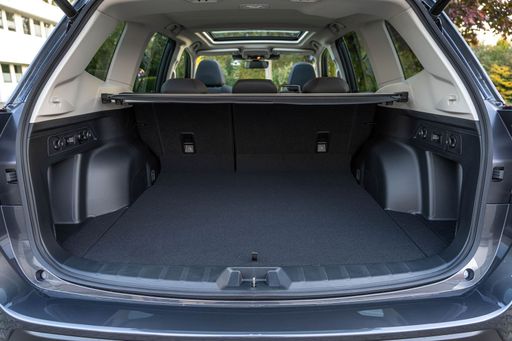 @ Subaru
@ Subaru

|

|
|
|
|
Costs and Consumption |
|
|---|---|
|
Price
25200 - 36800 £
|
Price
34700 - 42200 £
|
|
Consumption L/100km
5.7 - 6.6 L
|
Consumption L/100km
8.10 L
|
|
Consumption kWh/100km
-
|
Consumption kWh/100km
-
|
|
Electric Range
-
|
Electric Range
-
|
|
Battery Capacity
-
|
Battery Capacity
-
|
|
co2
129 - 148 g/km
|
co2
183 g/km
|
|
Fuel tank capacity
48 - 51 L
|
Fuel tank capacity
48 L
|
Dimensions and Body |
|
|---|---|
|
Body Type
SUV
|
Body Type
SUV
|
|
Seats
5
|
Seats
5
|
|
Doors
5
|
Doors
5
|
|
Curb weight
1455 - 1587 kg
|
Curb weight
1693 - 1739 kg
|
|
Trunk capacity
422 - 430 L
|
Trunk capacity
508 L
|
|
Length
4395 mm
|
Length
4670 mm
|
|
Width
1795 mm
|
Width
1830 mm
|
|
Height
1540 mm
|
Height
1730 mm
|
|
Max trunk capacity
1398 - 1406 L
|
Max trunk capacity
1679 - 1731 L
|
|
Payload
458 - 496 kg
|
Payload
446 - 492 kg
|
Engine and Performance |
|
|---|---|
|
Engine Type
Petrol MHEV
|
Engine Type
Petrol MHEV
|
|
Transmission
Manuel, Automatic
|
Transmission
Automatic
|
|
Transmission Detail
Manual Gearbox, Automatic Gearbox
|
Transmission Detail
CVT
|
|
Drive Type
Front-Wheel Drive, All-Wheel Drive
|
Drive Type
All-Wheel Drive
|
|
Power HP
140 - 186 HP
|
Power HP
136 HP
|
|
Acceleration 0-100km/h
8.3 - 10.3 s
|
Acceleration 0-100km/h
12.20 s
|
|
Max Speed
191 - 204 km/h
|
Max Speed
188 km/h
|
|
Torque
238 - 240 Nm
|
Torque
182 Nm
|
|
Number of Cylinders
4
|
Number of Cylinders
4
|
|
Power kW
103 - 137 kW
|
Power kW
100 kW
|
|
Engine capacity
1998 - 2488 cm3
|
Engine capacity
1995 cm3
|
General |
|
|---|---|
|
Model Year
2025
|
Model Year
2025
|
|
CO2 Efficiency Class
D, E
|
CO2 Efficiency Class
G
|
|
Brand
Mazda
|
Brand
Subaru
|
What drive types are available for the Mazda CX-30?
The Mazda CX-30 is offered with Front-Wheel Drive or All-Wheel Drive.
The prices and data displayed are estimates based on German list prices and may vary by country. This information is not legally binding.
